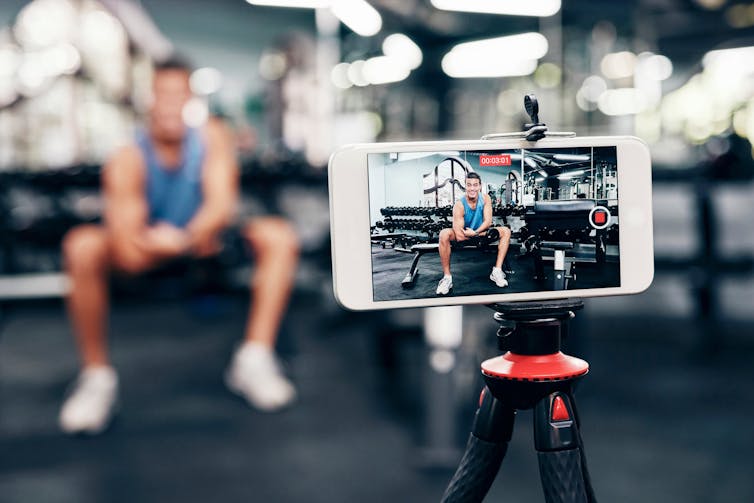YouTube limits youth’s exposure to fitness and weight-related videos to protect the health of youth. This means the platform’s algorithms won’t repeatedly recommend content that focuses on achieving a certain fitness level or weight, or celebrates certain physical characteristics.
This could include gym routines that pursue a certain look, or videos that idealize beauty traits, such as “how to get a chiseled jawline.” At the same time, YouTube has placed restrictions on promoting content that “demonstrates social aggression or intimidation” to people under 18.
But these changes won’t stop teens from searching or viewing such content in the first place, and may not be enough to make meaningful changes.
Social media platforms are a fundamental part of youth culture. They have the power to shape perceptions about appearance, health, fitness, and lifestyle. A vast repository of videos about appearance can put enormous pressure on young people, bombarding them with all kinds of content that promotes unrealistic and often unattainable body standards.
The role of algorithms
Research has shown that exposure to appearance-related content on social media increases body dissatisfaction and engagement in more restrictive eating behaviors.
Even if young people are actively seeking out more positive, less harmful content, it can be difficult to escape it if algorithms are built to keep pushing it onto users. There is. It can create a situation where a teenager’s curiosity can quickly turn into a dangerous obsession – with worrying consequences.
For example, if a teenager watches a “day at the gym” video from their favorite influencer, the algorithm will serve them more and more content related to fitness and weight. Watching this one video opens up an algorithmic “rabbit hole.” For impressionable teens, this has the power to exacerbate harmful behaviors and outcomes.
By suppressing the recommendation of this content, YouTube can take some of the power out of the algorithm. But even with restrictions in place, there is still a huge amount of fitness, beauty, and weight-related content available on the platform, which can perpetuate harmful body standards. YouTube’s restrictions won’t stop teens from being exposed to the same content on other apps.
body image and social media
Body dissatisfaction in teens is associated with depression, anxiety, and eating disorders. Because teenagers are at a critical developmental stage when they are highly susceptible to social influences, the content they are exposed to on social media can have a significant impact on how they view themselves.
story continues
The rise of fitness and beauty influencers on social media has gone hand-in-hand with videos about strict exercise routines, “what to eat in a day” videos, and everything about beauty routines. Teenagers feel pressured to conform to the ideal body depicted in this content, but these “ideals” are often actually unattainable for most people.
In reality, influencers often use different filters on their photos and videos. These digitally altered images create a distorted appearance and contribute to increased body dissatisfaction among teens.
More work is needed to address the larger societal issues that fuel body image concerns among teens. This starts with education.
If we give teenagers the knowledge and understanding of how algorithms can influence what they see and the risks involved, they will be able to learn about their own safe social media use. feel empowered and autonomous. Media literacy programs have been shown to improve teens’ body image and equip them with the skills to critically engage with online content.
YouTube, like other platforms, could take a more active role in promoting body diversity. This could include elevated videos that challenge traditional beauty standards. The combination of powerful algorithms, social pressure, and the pervasive nature of social media requires a more holistic approach.
Protecting teenagers from bad body image and building resilience online will not only require stricter algorithmic regulation. We need media literacy, education, and a cultural shift towards the body positivity movement.
This article is republished from The Conversation under a Creative Commons license. Read the original article.
Daniel Paddock is a member of the British Psychological Society.

